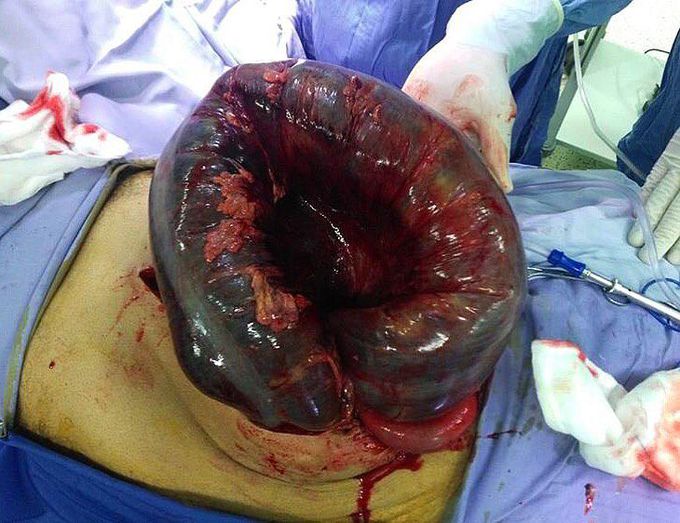


Gangrenous volvulus!!
Volvulus refers to twisting of a segment of the GI tract around its mesentery, the supportive tissue that carry the blood vessels, lymphatics and nerves to the intestines. When this occurs, it often leads to bowel obstruction and progressive abdominal pain. In severe cases such as in the picture shown, the torsion can be enough to entirely cut off its blood supply, paving the way for tissue necrosis and potential development of gangrene, peritonitis, and sepsis. Progression to this stage marks a bleak prognosis for the patient, who at this point is likely to demonstrate fulminant clinical symptoms of excruciating pain and vomiting. The most common sites of volvulus are the sigmoid colon (predominantly occurring in older adults with a mean age of 70) and the cecum, which is more commonly seen in infants and children. Diagnosis is established by imaging that shows a whirled pattern of the dilated colon, and management first requires endoscopic detorsion of the affected segment to restore the blood supply, followed by surgery to prevent recurrence.
Upper Gi bleeding
Hemodynamic stimuli&nonhemodynamic stimuliCellulitis, gangreneEffects of sugar on teeth

